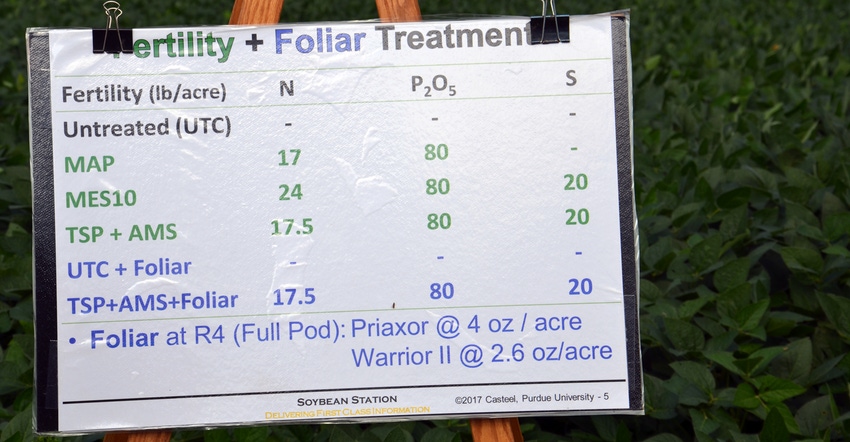
I am hearing at field days and winter meetings about the need for nitrogen and maybe even sulfur for soybeans. Is there any practical way to add these nutrients and be sure that I will get a payback on that investment?
The Indiana certified crop advisers panel providing answers this month includes: Danny Greene, Greene Ag Consulting, Franklin; Andy Like, agronomist, Amvac, Knox County; and Jeff Nagel, agronomist, Ceres Solutions Cooperative, based in Lafayette.
Nagel: Soybeans require nearly 5 pounds of N per bushel. They are net users of N, and estimates are that from 50% to 75% of needed N is provided by nitrogen fixation. That means a potentially significant amount of N needs to be provided by soil N, mostly through mineralization of N from soil organic matter.
Studies have been inconsistent on response of soybeans to N fertilization. Some studies show a yield response to added N in a high-yield environment, while others show no response. A recent publication titled “Soybean Response to Nitrogen Application Across the U.S.” concluded that nitrogen applications in soybeans had a small effect and were not likely to be economical.
Greene: Liquid starter equipment on the planter could apply ammonium thiosulfate near the row in a 2-by-2 format at planting. Consider testing strips with and without. If you don’t have a starter setup, consider broadcast spreading ammonium sulfate in strips. Work with your agronomist to monitor differences.
If you find a positive outcome that makes sense within your practices and budget, expand the testing for next year. Avoid the temptation of going “all in” after a single year where results seem positive. Recognize that each year is different, and environment will impact the outcome.
Return on investment is likely highest on low-exchange sandy soils and low organic matter soils where nitrogen, sulfur and other nutrients have the least staying power.
Like: I would start by searching for local trial data that would support the claim that these nutrients will give you a payback. Secondly, I would do some trials on your own farm to pinpoint the product rates and application timings that would give you the best return. Keep in mind that many responses to input trials are a function of that one year. Be careful when looking at trial data to make sure you’re not chasing an outlier in the data.
Nagel: Shaun Casteel at Purdue University has shown a statistically significant yield response to sulfur applications in northwest Indiana. Sulfur applications were in combination with nitrogen applications, yet the same rate of N applied without sulfur didn’t produce a significant yield response. His research is ongoing. Experimenting with 10 to 20 pounds per acre of sulfur applications, particularly on low organic matter sandy or timber soils, might be worth evaluating.
The two main sources of readily available sulfate sulfur are granular ammonium sulfate (21-0-0-24S) and liquid ammonium thiosulfate (12-0-0-26S, or ATS). K-Mag would also be a readily available sulfate sulfur source but does not contain N. Elemental sulfur or 90% S must go through a microbial process to convert elemental S to plant-available sulfate sulfur so would not be the preferred source.
Granular AMS or K-Mag can be applied with broadcast applications of potash or MAP/DAP, or applied alone. Applications can be made at planting or in-crop with high-clearance sprayers.
About the Author(s)
You May Also Like




